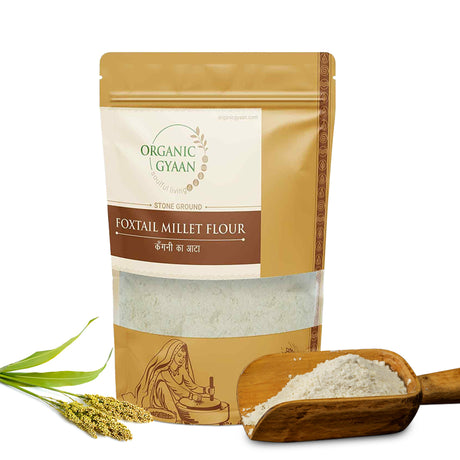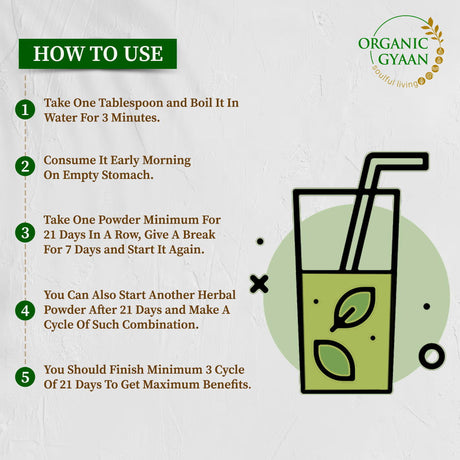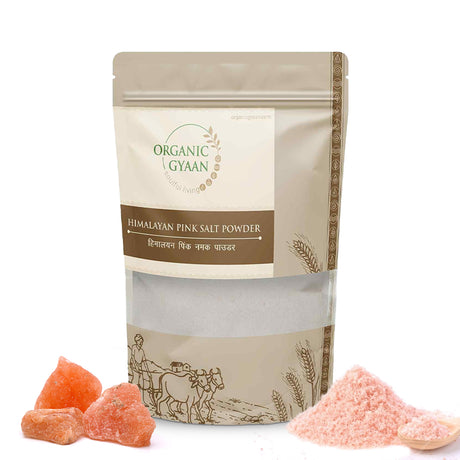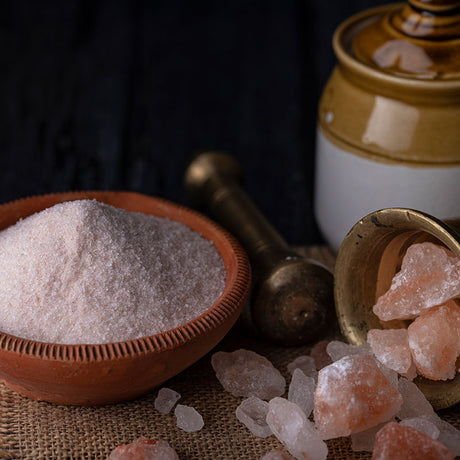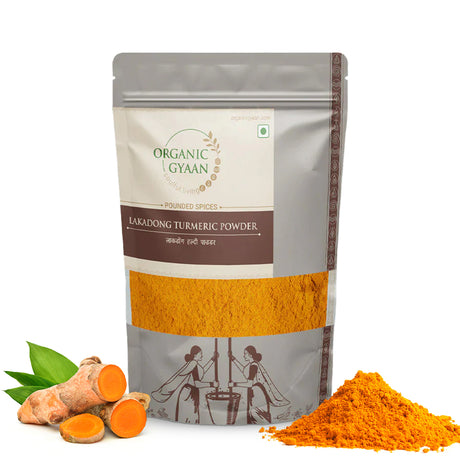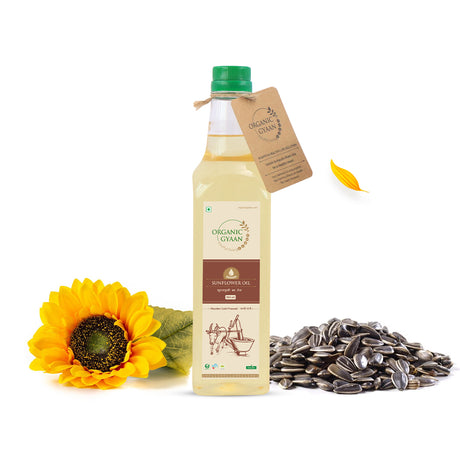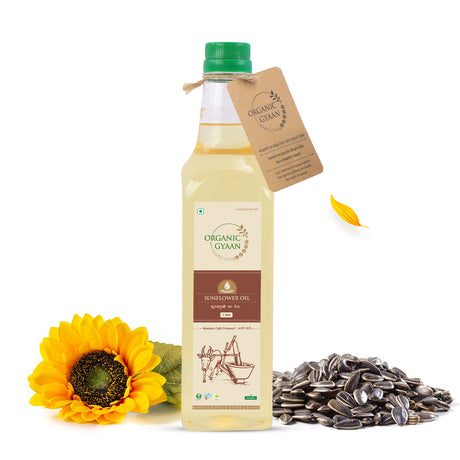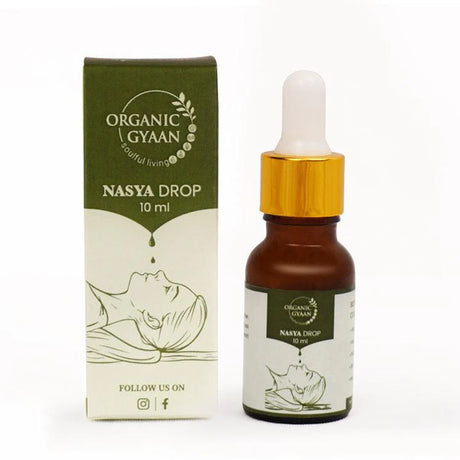As we live in the gluten-conscious world today, our grocery list of grains has evolved significantly. From high-protein grains like quinoa and amaranth to traditional gluten-free grains such as brown rice and millets, our options are as varied as they are flavourful. Today, we are embarking on a culinary journey of discovery, introducing you to a fantastic list of grains that are not only gluten-free but also a treasure trove of nutritional benefits."
What is Gluten, and Why should one go for a Gluten-Free Diet?
Gluten is a complex mixture of proteins including gliadin and glutenin which is found in grains like wheat, barley, and rye. While it's not harmful to most people, some individuals need a gluten-free diet. Those with celiac disease must avoid gluten to prevent autoimmune reactions in the small intestine. Others with non-celiac gluten sensitivity may benefit from a gluten-free diet to manage discomfort. People with a wheat allergy also must avoid gluten to prevent allergic reactions. A gluten-free diet is generally unnecessary for those without these conditions, however, some individuals choose to go gluten-free for other reasons, such as perceived health benefits, weight management, or as part of a broader dietary approach.
List of Gluten-Free Whole Grains
Let’s explore the list of grains that are recognized as gluten-free, this diverse range allows you to enjoy a nutritious and varied diet.
1. Quinoa
First on our list is a super-grain, a gluten-free hero, the nutritional powerhouse—quinoa.
Quinoa is one of the high protein grains, containing all nine essential amino acids – a rarity in the plant world! Packed with fibre, iron, magnesium, and manganese, it’s a nutritional pot of gold.
It's an excellent substitute for other grains in dishes like stir-fries and salads, lending a nutty flavour and delightful crunch.
2. Brown Rice
Next, we have a grain that you’re probably already well-acquainted with—brown rice. This hearty, nutty grain is the less processed version of white rice, retaining its bran layer and germ, which means more nutrients for you.
Brown rice is an excellent source of manganese, selenium, and a whole load of antioxidants. It is high in fibre too, which is great for digestion and keeping you feeling full longer.
Its mild flavour and chewy texture make it an easy addition to almost any meal, from stir-fries to salads, soups, and even desserts!
3. Millets
Let’s now turn our attention to a super grain, millets. The nutritional profile of millets is impressive. They're high in protein, fibre, and antioxidants, and they boast a substantial array of minerals like magnesium, phosphorus, iron, and potassium. They also have a low glycemic index, making them a good choice for those monitoring their blood sugar levels.
Have you ever heard about Positive and Neutral Millets!
Positive millets refer to those that are nutritionally beneficial and have gained popularity for their health advantages. Some examples of positive millets include:
-
Foxtail Millet
-
Barnyard Millet
-
Kodo Millet
-
Little Millet
-
Browntop Millet
Neutral millets are those that may not be as well-known for their health benefits but are still nutritious and can be a part of a balanced diet. Some examples of neutral millets include:
-
Pearl Millet
-
Finger Millet
-
Proso Millet
-
Great Millet
-
Desi Corn
Cooking millet is straightforward, similar to rice, and their mildly sweet, nutty flavour pairs well with a variety of dishes. From salads and soups to baked goods and breakfast porridge, there's a place for millets in your kitchen!
4. Oats
Finally, let’s talk about the grain that's likely been a part of your breakfast for years - oats. Oats are a nutrition powerhouse, packed with fibre, especially a type called beta-glucan, known for its cholesterol-lowering effects.
They're also a great source of vitamins, minerals, and antioxidants. And let’s not forget, they're the perfect canvas for a plethora of toppings, from fruits and nuts to honey and cinnamon!
5. Buckwheat
Moving along, we come to buckwheat. And no, despite its deceptive name, buckwheat isn't related to wheat at all. It is loaded with nutrients—high in fibre, and rich in antioxidants and minerals like manganese, magnesium, and copper. Its high protein content and the fact that it’s gluten-free makes it a great choice for many.
Let’s not forget about delicious, earthy flavour of buckwheat that adds depth to any dish. Buckwheat groats can be used in salads, soups, or ground into flour to make pancakes or noodles (ever heard of soba noodles? Yep, that’s buckwheat!)
6. Amaranth
Amaranth, the 'never-fading' grain in Greek, but often asked question is “Is amaranth gluten free?” High in protein and fibre this grain is gluten-free, it also contains micronutrients such as manganese, magnesium, phosphorus, and iron.
What really sets Amaranth apart is its notable content of lysine, an essential amino acid that most grains lack. Lysine is crucial for tissue growth and repair, which makes amaranth a fantastic addition to any diet.
Its peppery flavour makes it a perfect match for a variety of dishes, from breakfast porridges to dinner stir-fries, and even popped as a snack!
7. Teff
Last but definitely not least, we have teff. Originating from Ethiopia, this tiny grain has been a dietary staple for thousands of years. Don't let its size fool you, though. Teff is a nutritional giant, packed with protein, fiber, and a wealth of minerals like iron, calcium, and manganese.
Teff’s mild, nutty, and slightly sweet flavour is a delicious addition to a variety of dishes. It can be cooked as a side dish, added to soups and stews, or ground into flour and used in baking. It’s also the main ingredient in injera, the traditional Ethiopian flatbread.
Health Benefits of Gluten-Free Grains
Having introduced you to these fascinating gluten-free grains, it’s time to delve deeper into why these should be a part of your diet.
1. Beneficial for those with Gluten Intolerance
-
For individuals with conditions like celiac disease or non-celiac gluten sensitivity, these grains offer an opportunity to enjoy a variety of dishes without experiencing adverse health effects.
-
Consuming gluten-free grains can help avoid inflammation and damage to the intestinal lining, which are common in people with gluten intolerance when they consume gluten.
2. Support Heart Health
-
Some gluten-free grains, like oats and brown rice, have heart-friendly properties.
-
These grains help to lower bad LDL cholesterol levels and increase good HDL cholesterol levels, thereby reducing the risk of heart disease.
3. Boost Digestive Health
- Certain gluten-free grains, such as millet and amaranth, provide prebiotic fiber that nourishes beneficial gut bacteria, promoting a healthier gut environment.
4. Promote Stable Energy Levels
-
Gluten-free grains are rich in complex carbohydrates, which provide sustained energy as they're digested slowly.
-
This slow release of energy helps maintain stable blood sugar levels and prevents energy spikes and crashes.
5. Weight Management
-
The high fiber content of these grains promotes satiety, reducing the likelihood of overeating.
-
This, combined with their nutrient-density and low-calorie count, can contribute to effective weight management.
Tips for cooking Gluten-Free Grains
1. Cooking Ratios and Times
Each grain has its unique cooking ratio and time. For instance, quinoa uses a 2:1 water-to-grain ratio and cooks in about 15 minutes, whereas brown rice requires more water and time.
2. Soaking for Enhanced Nutrition
Grains like brown rice and buckwheat can benefit from soaking before cooking, which helps reduce phytic acid levels and improve mineral absorption.
Generally, soak these grains for a couple of hours or overnight before cooking.
3. Flavour Boosters
Enhance the flavour of grains by cooking them in vegetable broth instead of water or adding herbs and spices.
Exciting Gluten-Free Grain Recipes
Millets Khichadi Recipe
Ingredients:
-
1 cup mixed millets (any combination of foxtail millet, barnyard millet, little millet, kodo millet, or any millet of your choice)
-
1/2 cup split yellow moong dal (split yellow lentils)
-
2 cups mixed vegetables (carrots, peas, beans, etc.), chopped
-
1 teaspoon grated ginger
-
1 green chili, finely chopped (adjust to your spice preference)
-
1/2 teaspoon turmeric powder
-
1/2 teaspoon cumin seeds
-
1/2 teaspoon mustard seeds
-
1 tablespoon organic wooden cold-pressed coconut oil
-
A pinch of asafoetida (hing)
-
4 cups water
-
Salt to taste
-
Fresh coriander leaves, chopped (for garnish)
Instructions:
1. Rinse the mixed millets and moong dal together under cold water until the water runs clear. Soak them in water for about 30 minutes. Drain and set aside.
2. In a mud pot, heat the organic wooden cold-pressed coconut oil over medium heat.
3. Add the cumin seeds and mustard seeds. Let them sizzle and splutter.
4. Add a pinch of asafoetida (hing) for flavor.
5. Now, add the grated ginger and chopped green chili. Saute for a minute until the raw smell disappears.
6. Add the mixed vegetables to the pot and sauté for a few minutes until they are slightly cooked.
7. Stir in the soaked millets and moong dal into the pot.
8. Add turmeric powder and salt to taste. Mix everything well.
9. Pour 4 cups of water into the pot, and give it a good stir.
10. Cover mud pot with a lid and let it simmer until the millets and dal are fully cooked and soft (about 20-25 minutes). Stir occasionally and add more water if needed.
11. Once the khichadi is cooked, let it sit for a few minutes before removing the pot from heat.
12. Garnish the millets khichadi with freshly chopped coriander leaves.
13. Serve hot with a side of plain yogurt or a dollop of A2 ghee (clarified butter).
Enjoy the delicious and nutritious millets khichadi.
Amarnath Porridge Recipe
Ingredients:
-
1 cup amaranth
-
2 1/2 cups water
-
1 cup A2 Milk
-
1/2 teaspoon ground cinnamon
-
1 tablespoon organic honey (adjust to taste)
-
1 large apple, peeled and diced
-
2 tablespoons chopped nuts (e.g., almonds, walnuts, or pecans)
-
1 tablespoon chia seeds (optional)
-
Pinch of salt
Instructions:
1. Rinse the amaranth under cold water using a fine mesh strainer.
2. In a medium-sized mud pot, combine the rinsed amaranth and 2 1/2 cups of water. Bring it to a boil, then reduce the heat to low, cover, and let it simmer for about 20 minutes or until the amaranth is tender and the water is absorbed.
3. In the last few minutes of cooking, add the almond milk, ground cinnamon, organic honey and a pinch of salt. Stir to combine and let it simmer for another 2-3 minutes.
4. Remove the porridge from the heat and let it sit for a couple of minutes.
5. In a separate mud pot, sauté the diced apple with a little butter or oil over medium heat until slightly softened.
6. Serve the warm amaranth porridge in bowls, topped with the sautéed apples, chopped nuts, and chia seeds if using.
7. Feel free to drizzle extra organic honey on top for added sweetness if desired.
Enjoy your comforting and nutritious amaranth porridge!
Conclusion
Going gluten-free doesn't mean you have to say goodbye to grains. Quite the contrary, actually. As we have seen, the world of gluten-free grains is rich and diverse, offering something for everyone. High protein grains, whole grains, and a vast array of gluten-free carbs are all readily available for you to explore and enjoy.
So, why not take this as an invitation to embark on a gluten-free culinary adventure? Try new recipes, and experiment with different grain types but ensure that you buy the organic one only, you can explore our online store for the same and enjoy the variety and versatility these fantastic grains offer. Happy eating!




